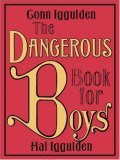The Clique Antidote: Shug by Jenny Han
 In her first novel author Jenny Han catches Annemarie Wilcox at the very moment that her adolescence begins. As the sun sets on the last day of summer vacation Annemarie (nicknamed Shug for Sugar) eats cherry popsicles with her oldest friend Mark:
In her first novel author Jenny Han catches Annemarie Wilcox at the very moment that her adolescence begins. As the sun sets on the last day of summer vacation Annemarie (nicknamed Shug for Sugar) eats cherry popsicles with her oldest friend Mark:"It is the end of a summer afternoon and the sun will be setting soon, our favorite part of the day. We're eating Popsicles, cherry ones. My shirt is sticking to my back, and my hands feel sugary and warm, but my lips are cool. The sun is turning that fiery pink I love, and I turn to Mark the way I always do.
In her small Southern town, where everybody knows everything about everybody, the world seems to be shifting under Annemarie's feet. Entering seventh grade in junior high, the old group of predictable friends is regrouping into couples. Even her best friend Elaine Kim pairs off, and Annemarie is afraid that she will lose the soulmate that she depends upon to balance her life.
I look at him, really look at him....But today, at this very moment, he is different, and it's not even something I can explain. But I feel it. Boy, do I feel it. On the outside, everything looks the way it always does, but on the inside, it's like some little part of me is waking up."
Although she's always been on the fringe of the popular group, Annemarie sees that where everyone sits at lunch becomes the measure of each person's status. She wants Mark to see that she likes him, but instead of showing her feelings, she picks quarrels with him and watches him pair up with another girl. The one boy she intensely dislikes because of his cruel teasing becomes her most loyal defender when she tutors him in English and comes to understand his family situation.
Her beautiful but alcoholic mother becomes more distant from Annemarie and her father, who spends most of his time away on the job. Her big sister Celia is sometimes helpful, as when she helps Annemarie find clothes and a hairdo for the big dance, and sometimes withdrawn from the family as she spends most of her time with her boyfriend. But with all the change, Annemarie begins to see her family and her friends with different eyes. Sometimes difficult and sometimes insightful, Shug becomes aware of the forces behind others' behavior, good and bad, and sees her own feelings more objectively.
In this first novel Shug, Han has written an exquisite picture of the turning point of childhood, when life takes on different colors and different meanings. In adolescence or looking back on it from many years' distance, this book is a wonderful window on one girl's transition. Girls will love it and learn from it.
Labels: Adolescence (Grades 6-9)



















